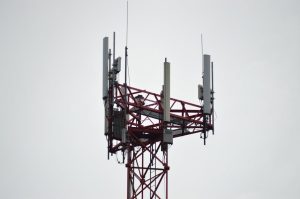Starlink: Revolutionizing Global Internet Connectivity with Satellite Technology

Starlink: Revolutionizing Global Internet Connectivity with Satellite Technology
Starlink is a satellite constellation developed by SpaceX, a private aerospace manufacturer and space transport services company founded by Elon Musk. The project aims to provide high-speed, low-latency internet connectivity worldwide, bridging the digital divide and revolutionizing the way we access the internet. With its launch, Starlink is poised to transform the global telecommunications landscape, enabling fast, reliable, and affordable internet access to remote and underserved communities.
Introduction to Starlink
Starlink is a constellation of low-Earth orbit (LEO) satellites, designed to provide internet connectivity to any point on the globe. The system consists of thousands of small satellites, each weighing approximately 227 kilograms, orbiting the Earth at an altitude of around 550 kilometers. This constellation is designed to offer a range of services, including internet backbone, mobile backhaul, and consumer broadband, with the goal of providing gigabit speeds and latency as low as 20 milliseconds.
How Starlink Works
Starlink uses a combination of advanced technologies, including phased array antennas, Hall effect thrusters, and Ka- and Ku-band frequencies, to provide high-speed internet connectivity. The system operates on a mesh network topology, where each satellite acts as a node, communicating with other satellites and ground stations to provide seamless and continuous coverage. The satellites are equipped with high-gain antennas, which enable them to communicate with user terminals on the ground, as well as with other satellites in the constellation.
The user terminals, also known as dishes, are small, flat, and square in shape, making them easy to install and maintain. They are equipped with a phased array antenna, which allows them to steer and track the satellites in real-time, ensuring a stable and reliable connection. The dishes communicate with the satellites using a radio frequency (RF) signal, which is then transmitted to the user’s device, such as a computer or smartphone, via a Wi-Fi or Ethernet connection.
Benefits and Applications of Starlink
Starlink has the potential to revolutionize the way we access the internet, with a range of benefits and applications, including:
Improved connectivity: Starlink can provide internet access to remote and underserved communities, bridging the digital divide and enabling people to access essential services, such as education, healthcare, and finance.
Faster speeds: Starlink’s low-latency and high-speed connectivity can support a range of applications, including online gaming, video streaming, and cloud computing.
Increased mobility: Starlink’s satellite-based system can provide internet access on-the-go, enabling people to stay connected while traveling or in areas with limited or no terrestrial infrastructure.
Disaster recovery: Starlink can provide critical communications infrastructure in the event of a natural disaster, enabling emergency responders and relief efforts to access vital information and coordinate response efforts.
Challenges and Future Developments
While Starlink has the potential to transform the global telecommunications landscape, there are several challenges and limitations that need to be addressed, including:
Regulatory frameworks: Starlink must comply with a range of regulatory frameworks, including those related to spectrum allocation, licensing, and environmental impact.
Interference and congestion: The increasing number of satellites in LEO orbit raises concerns about interference and congestion, which can impact the performance and reliability of the system.
Cost and affordability: The cost of accessing Starlink’s services may be a barrier for some users, particularly in developing countries or low-income communities.
Future developments: SpaceX is continuously working to improve and expand the Starlink system, with plans to launch thousands of additional satellites and develop new technologies, such as laser-based communication systems.





